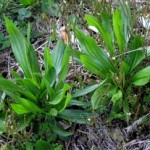Intro: Plant Families

Hi I am Elana – I teach herbal medicine making, soap making , and other skills with the Suburban Foragers. I am so glad to have found a local community where I can share my love of plants and primitive skills.
On a monthly basis, we are going to learn about plant families. We will start by focusing on those plants near and dear to my heart, the invasive plants that we have all come to know(grow) and love. So some of the families we will learn about will be dandelion, nettles, wild rose, mug(crone)wort, clover, and pine. These plants are abundant in the north east. They have wonderful medicinal applications, are easy to find. Having a growing knowledge and understanding of the plant families will allow us to generalize information about the strengths and weakenesses and some similar properties that they have.
- Trifolium pratense
- Melissa officinalis
- Plantago lanceolata
When we learn about plants we utilize the classification system developed by Linnaeus in 1735. While there have been minor changes to the system, it has largely remained intact, since it was developed. The classification is called “Botanical Latin” and it has some interesting rules. The classification was helpful in naming the different parts of plants and flowers. These parts often related to the reproduction of plants. Unlike mammals, plant reproduction is a bit more diverse and complex. “Botanical Latin” is often interesting in the choice of words and phrases that Linnaeus used to call plants. I strongly suggest if you like language and word craft that you spend some time learning the Latin of Linnaeus. This language is the standard language to classify plants the world over. Developed at a time when Latin was the pervasive language of the day, it remains the universal language. I am looking forward to learning with you as we talk about plant families.
Elana




Comments
Powered by Facebook Comments